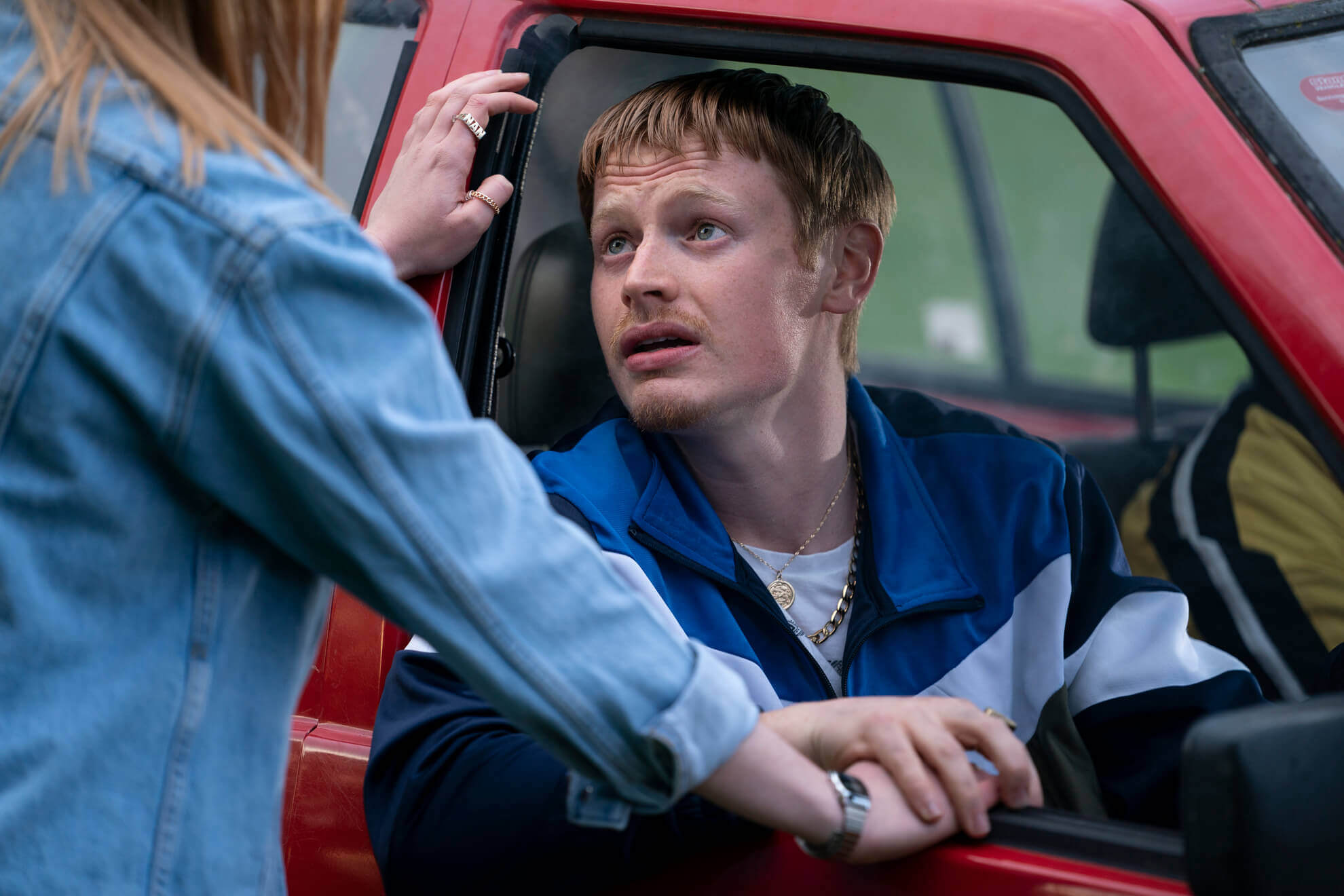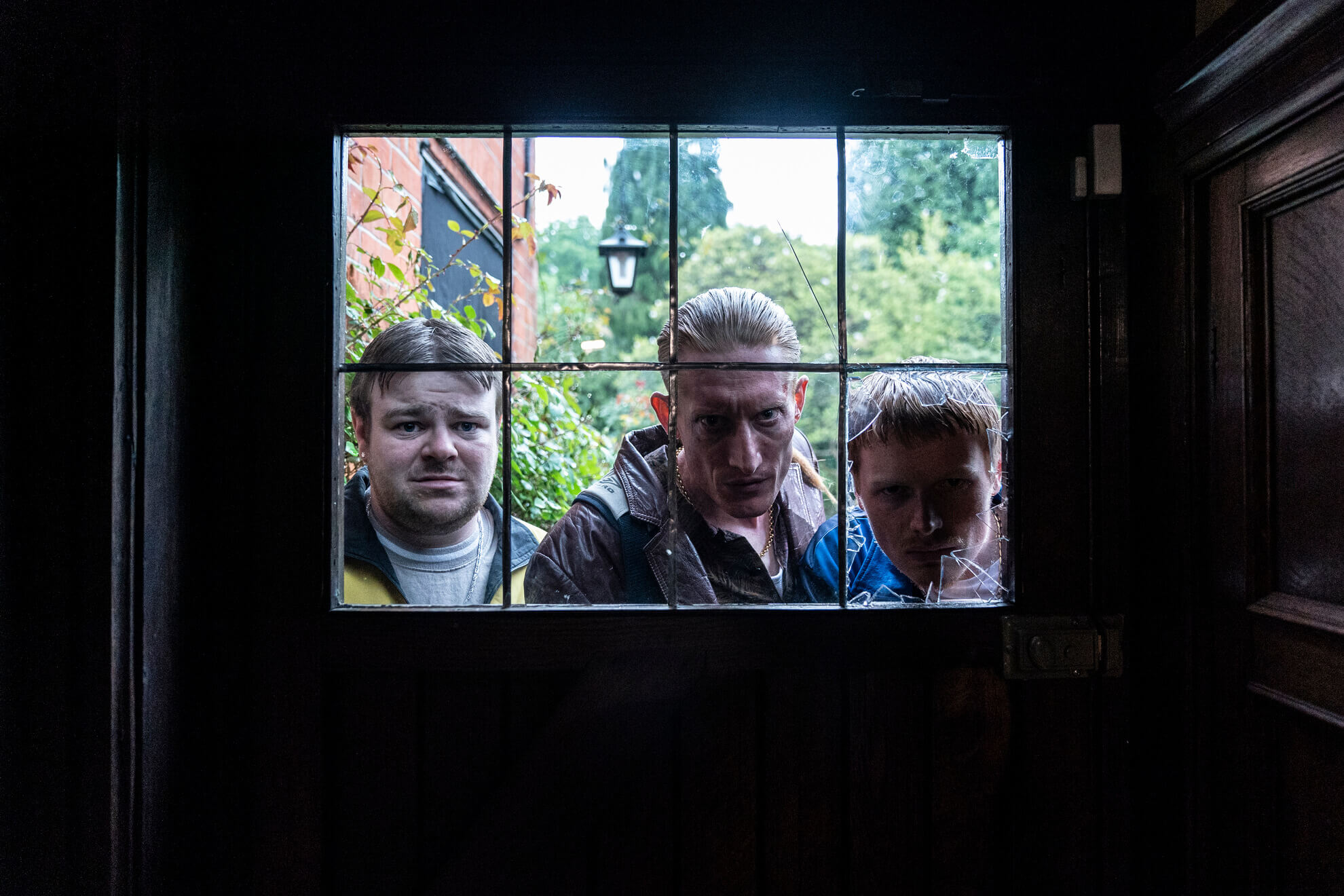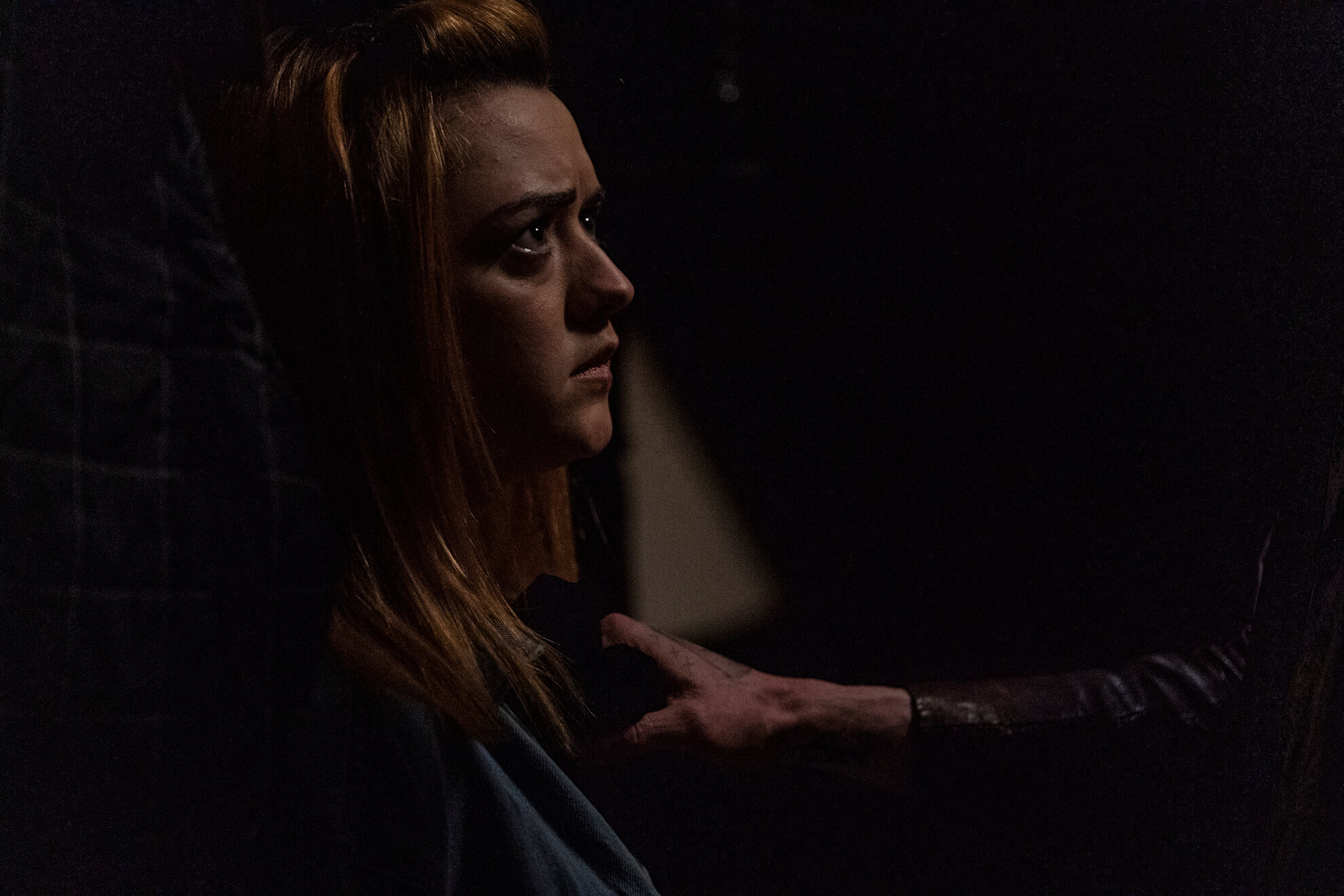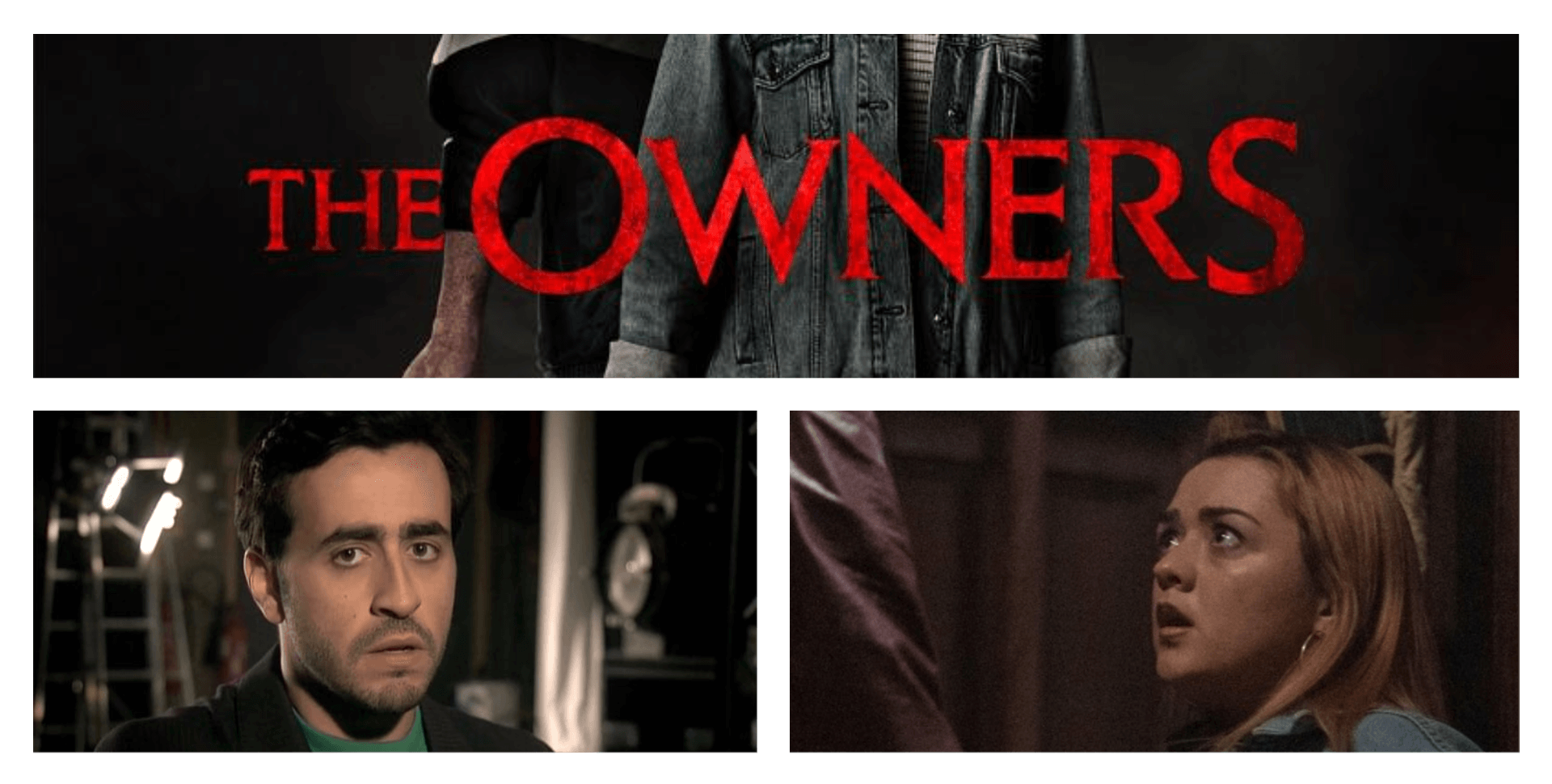The Owners follows a group of young friends when they attempt to steal from an elderly couple's mansion for riches. The tables are turned when the couple returns home unexpectedly and the situation escalates into violence. Based on the French graphic novel "Une nuit de pleine lune" by Hermann and Yves H, The Owners is co-written by Mathieu Gompel and Director Julius Berg. We recently had the joy of interviewing Director/Co-writer Julius Berg on his work on The Owners, which is now available to watch via select theaters, On Demand, and Digital.

Photos courtesy of RLJE Films
What was the casting process like for The Owners?
I worked with Dan Hubbard, an amazing casting director, who helped me a lot in the process. He quickly understood the characters I was looking for. For the three young robbers, he sent me a video session and I immediately fell in love with Jake Curran, Ian Kenny, and Andrew Ellis. They represented the exact profile of characters I had in mind when I was writing, like a gift from the sky. It was a longer process for the old couple. I was searching for personalities who are very charming, warm, joyful, bit childish, but those also possess strong versatility to explore something darker, creepy, and nasty. In addition to being a lovely man, Sylvester McCoy can easily build this weird energy inside of him which can suggest the perversity of his character. For his wife, few months before pre-production, I went to the cinema and saw this legendary movie from Free Cinema in the 60s: A Taste of Honey with Rita Tushingham. She was 19 and was already brilliant. I heard she was still working and would be an amazing Ellen Huggins, someone with the same versatility as Richard but someone who is even darker and more intense and intrusive. For the main role, Maisie was evident, a huge talent with enough intensity to avoid the archetypal figure of the female passive victim in this kind of movie.
The Owners is an adaptation of the French graphic novel "Une nuit de pleine lune" by Hermann and Yves H. How was the collaborative process of writing the screenplay with co-writer Mathieu Gompel? Which facets of the graphic novel were prevalent or omitted from the final version of the screenplay?
The graphic novel is very cinematic and offered a great story for the big screen. We kept the concept of the home invasion and hunters who become preys, unity of time and space: a story that takes place in the same house during one single night. But the original story is also bit binary with the classical villain. The owner of the house used to be a soldier — physically stronger than the robbers. With Mathieu, we wanted to play up the differences between the protagonists and those who oppose them as much as possible. With energetic young robbers, we wanted to build exact opposite figures: an old couple still in love, very fragile physically, but smarter like chess players. We worked on the background of the characters to add more density and we found another ending to offer a more emotional journey for the audience.

In the first half of the film, the way that Nathan, Gaz, and Terry talk to each other resembles a person who is wrestling with their conscience (Nathan), with the devil in one ear (Gaz) and the angel in the other (Terry). Terry and Gaz appear to be polar opposites. Was it an intention to illustrate this analogy in their dynamic, so that the final few minutes would be more shocking to the audience? [If so, it worked!]
I’m glad you noticed this. It’s exactly what we wanted to develop - robbers with very distinctive personalities with no possibility to be unified in front of the Huggins. Three young robbers seem like the same people torn by different desires. Nobody seems totally guilty in the movie despite their dark motivations. The Huggins have sincere reasons to act like they do, mainly to preserve their love and their desire of family.
It gets realistically gory in the basement scene. Which scenes did you find to be the most worthwhile and challenging during on-location filming?
Of course, there is one specific moment in the basement which was really fun to shoot. I don’t want to spoil anything so I won’t go further. But as my first feature film shot in England with the entire British crew and cast, I can say the most challenging process for me was to find the accurate vocabulary to help actors to find the right color and energy. My English is far from great as you can notice, but I didn’t want to make a simple horror movie. I wanted to explore the darkness of a psychological thriller. I spent a lot of energy to reach a good level for my characters.
How was the post-production process with Editor Marc Boucrot (Enter the Void)?
The first weeks of editing are always very hard and dark. You’re in front of all mistakes that you did on set and face the frustration of not enough takes and shots. The Owners is a low-budget movie. We shot it very fast in 23 days - quite hard when English is not your first language and when you want the best for your first feature film. But the good news is we had more time during post-production, so with patience and hard work, the editing process started to become really fun. We found the right level of energy for each scene to bring the characters to life. We had a great collaboration with Marc. I’m glad he was patient with me and helped a lot to find a good balance. I think we experimented almost on all possible combinations. We really did the best with the material we had.

How was the process of working with Cinematographer David Ungaro to conceive the aesthetic for The Owners?
It was a great collaboration with David. I wanted something rough, dirty, and dark. He did an amazing job, listening, and was full of suggestions. We worked with a single camera to be more precise, less shots, but more accurate. We worked in cinemascope, very rectangular ratio, and lastly, with a spherical lens to narrow the picture and to give the feeling of being trapped. It gave also the sensation of claustrophobia.
What films/directors/genres have had the biggest influence on you and your feature film, The Owners, and why?
“Misery” was a good reference to build the atmosphere and the story – an innocent place which became a very dark playground. I didn’t want a lot of bling in the filming, but something simple and elegant to give all power to the characters. The versatility of Kathy Bates was very interesting for me to build the old couple. “Rosemary’s Baby” was another great reference to give this weird side, but a warm and very intrusive profile of a villain.
Best advice for budding filmmakers?
Godard used to say: in cinema, there is no rule, just exceptions. But a simple law might be useful for beginners: take your camera and go out to shoot! Don’t afraid to write something that’s not perfect. Train yourself with short films. Do it again and again and watch as many movies as possible! Director is an artisan job; your personal stamp will appear with time and experience.

